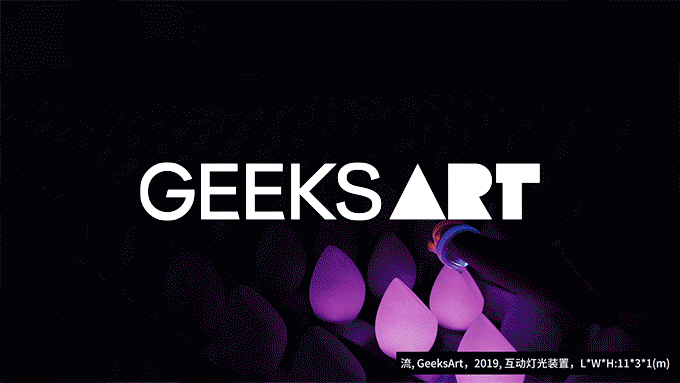将品牌形象调至于目标受众同频
使空间承载记忆体、容纳时代感、具有精神性
在市场激流中既随之奔流,又保持自我
Elevating the brand image to resonate with the target audience, making the space a vessel for memories, embracing a contemporary sensibility, and imbuing it with spirituality. Navigating the market currents by flowing with the stream, while retaining a distinct and authentic identity.
“传统的味道是精神纽带,年轻人热衷于把它编织进新世界。”
“The traditional taste serves as a spiritual bond, and young people are enthusiastic about weaving it into the fabric of the new world.”
2023年6月,萬蔚与IN.X屋里门外携手,在北京王府井商厦完成了萬蔚烤鸭·北京菜餐厅设计。从成都到北京,从地域美食到百年金街,这又是一次古老和当代、成都和京城、传统与热血如何相融的课题——这一次,吴为相信文化和氛围混合了,才有故事发生。萬蔚烤鸭·北京菜由此而生。
In June 2023, Wanwei teamed up with IN.X, and together they completed the design of the Wanwei Roast Duck & Beijing Cuisine restaurant at the Wangfujing Department Store in Beijing. From Chengdu to Beijing, from regional delicacies to a century-old shopping street, this marks another exploration of how the ancient and the contemporary, Chengdu and the capital, tradition and passion can blend. This time, Wu Wei believes that it is the blending of culture and ambiance that gives rise to stories. And thus, Wanwei Roast Duck & Beijing Cuisine comes to life.
空间精神性
/纳入当代性和时间感
Spiritual Essence of Space
/Incorporating Modernity and a Sense of Time
把我们固守的扎实保留,将我们憧憬的激情灌注。
在萬蔚,固守的是滋味,憧憬的则是鲜活的城市生活——于是,热力和冷峻、激情和严整、光滑与粗粝、当代与过去都以空间为支点平衡交融着,空间不断抛出疑问又自行给出答案,故事性是空间暗含的设计脉络。
Preserving what grounds us while infusing the passion we aspire to.
At Wanwei, what we preserve is the essence, and what we aspire to is the vibrant urban life. Thus, a balance between warmth and coolness, passion and precision, smoothness and ruggedness, the contemporary and the past is achieved with space as the pivot. The space continuously poses questions and, in turn, provides answers. The narrative quality is the underlying design thread woven into the space.


空间建立在北京的城市底色上,而其品牌又创建于成都。空间内,天府之城的气息若隐若现,设计师为了呈现这种无法被建造的无名特质,间接由城市生活中提取,正如花从种子中长出。成都自古就是移民城市,将它的包容、自在和热辣人间的冲劲儿纳入空间,由穿插互构的建筑体块、富于光泽的金属表皮、氤氲浮动的温暖色调刻画出品牌基因中的当代城市特质。
The space is established against the urban backdrop of Beijing, while its brand originates from Chengdu. Within the space, the ambience of Chengdu, the “City of Heavenly Abundance,” subtly emerges. To portray this intangible quality that cannot be built, the designer indirectly extracts it from urban life, much like a flower growing from a seed. Chengdu has been a city of immigrants since ancient times, and the inclusive, carefree, and vibrant spirit of the city is incorporated into the space. The contemporary urban characteristics of the brand’s DNA are delineated through interwoven architectural elements, glossy metallic surfaces, and the ethereal warmth of floating hues.




当代性的另一面,是空间给予食客的时间感。
On the flip side of modernity is the sense of time that the space imparts to diners.
味觉总是将我们和时间以及传统相连,所以人人都有刻在骨子里的味觉执念:烤鸭、京菜、老城、胡同和皇城……记忆总是裹挟味道源源不断地涌出——在青灰色的条石墙前;在遍布裂痕的梁柱旁;在松竹石影里,时间、空间被牢牢锁在一起,味觉和此时此刻融合成一种可贵的体验:存在感。这也是商业空间和场景体验都在飞速迭代时,我们最可能丢失掉的珍宝。
Taste always connects us to time and tradition, so everyone harbors an inherent obsession with certain flavors: Peking duck, Beijing cuisine, the old city, hutongs, and the imperial city. Memories continuously emerge entwined with flavors—before the gray-blue stone walls, beside beams and columns covered in cracks, in the shadows of pine, bamboo, and stones. Time and space are firmly locked together, and taste blends seamlessly with the present moment, creating a precious experience: a sense of existence. In the rapidly evolving landscape of commercial spaces and experiential scenes, this is the treasure we are most likely to lose.
举重若轻
/空间细部展开
Lifting with Ease
/Unfolding the Details of Space
在设计对文化性的深切致意之上,空间的具体表达则举重若轻,务求准确松弛。
Above the profound homage to cultural significance in the design, the specific expression of space is handled with an effortless touch, aiming for accuracy and relaxation.


由入口至开放的散座区经过一段折廊,新旧北京的城市影像前,古老的木梁与重力感十足的倾斜结构体一古一今,利落轻盈的金属材料的加入为细部注入了现代感,等位区也不着刻意,延续了这一区域的体块互构又完全满足了实用性。山石水景皆以表意为主,打破传统的空间构成使这些自然风物有了更多观看视角。
From the entrance to the open seating area through a folded corridor, with the urban imagery of old and new Beijing before you, ancient wooden beams and a contemporary inclined structure coexist—one representing the past, the other the present. The addition of sleek and lightweight metallic materials injects a modern touch into the details. The waiting area is also unpretentious, continuing the interplay of architectural elements in this region while fully meeting practical needs. The representation of rocks and water features predominates, breaking away from traditional spatial compositions and providing more viewing angles for these natural elements.




京城建筑旧影能同时从青灰色条石上捕捉,轻盈简素的现代材料更好地融入整个空间,与不同光泽感的肌理表面完成多个视觉层次。红色取自双城古今、人情风味的重合处,是中国人的精神先验中最具代表性的色彩。经改良的中古餐椅也与交融的空间特质一脉相承,如画卷中的一处闲笔,再次丰富了空间的文化包容性。
The old shadows of Beijing’s architecture are captured simultaneously from the gray-blue stone surface, allowing the light and simple modern materials to integrate seamlessly into the entire space. These materials, with varying levels of gloss, complete multiple visual layers. The red color is drawn from the convergence of ancient and modern, reflecting the flavors of human sentiment, and is the most representative color in the spiritual consciousness of the Chinese people. The improved Ming-style dining chairs also seamlessly inherit the blended characteristics of the space, akin to a casual stroke in a painting, further enriching the cultural inclusiveness of the space.
策略为先,设计为后
Strategy First, Design Follows
一道自古传承的菜肴,本身就蕴含着时间长河所赋予的多重况味,而非绝对的传统或先锋可以承载,这也是品牌基因中恰好与之匹配的特质。这种特质能够将地域、商圈、产品和食客一脉相连,在行业竞争激烈的区域牢固地打开市场。
与此同时,品牌形象有效建立。在非古即今的大量同类品牌中,设计师将空间形象调整至和目标食客同频:回望传统而后纳入潮流,在怀古和先锋中间,找到舒适的平衡。
最终,设计师希望空间和食物成为一个不可分割的印象综合体而打动食客,使每一次的体验成为五感俱全的生动相遇,能应对市场变化而又保持自身的属性,从而大幅提升市场认知度。
A dish passed down through the ages inherently carries multiple flavors bestowed by the river of time, and it is not confined to absolute tradition or avant-garde. This aligns perfectly with the traits embedded in the brand’s DNA. Such qualities connect the region, business district, products, and diners, firmly opening up the market in fiercely competitive areas.
Simultaneously, the brand image is effectively established. Amidst numerous similar brands that bridge the gap between antiquity and modernity, the designer adjusts the spatial image to resonate with the target diners: looking back at tradition before incorporating contemporary trends, finding a comfortable balance between nostalgia and innovation.
Ultimately, the designer aims for the space and the food to form an inseparable impression complex that captivates diners, turning each experience into a vivid encounter that engages all five senses. This approach enables the establishment to adapt to market changes while maintaining its unique attributes, significantly enhancing market awareness.
项目信息——
项目名称|萬蔚·烤鸭王府井店
项目地点|中国·北京
项目面积|630㎡
室内设计|IN.X屋里门外设计
设计主创|吴为
设计团队|李伟举、贾琦峰、曲正
室内陈设|宋江丽、应哲光
照明设计|元入科技 Uniimport
项目摄影|郑焰
项目文案 | NARJEELING那几岭
项目策划|楽品牌策略机构
Project Information
Project Name | Wanwei Roast Duck Wangfujing Branch
Project Location | Beijing, China
Project Area | 630 sqm
Interior Design | Beijing IN•X Design Co., Ltd.
Design Lead | Wu Wei
Design Team | Li Weiju, Jia Qifeng, Qu Zheng
Interior Furnishings | Song Jiangli, Ying Zheguang
Lighting Design | Uniimport by Elementech
Project Photography | Zheng Yan
Project Copywriting | NARJEELING
Project Planning | LE Brand Strategy Agency


























